Builder Ryan McCoon, LEED APH of Endura Performance Homes, has more than 30 years’ experience in the residential construction industry and has built 60 homes ranging in price from $500 – $1.5M in Traverse City, MI area. As a high-end custom builder, Ryan has the weight of his client’s expectations at the forefront of his mind as he completes their homes. He takes care to ensure that the projects are attractive, healthy, and have lower operating costs and increased durability for many years to come.
Details »Insulation Institute Blog
Posts Categorized: Energy Efficiency
EE Jobs Offer Best Bet for Recovery
A new report from E4The Future says energy efficiency (EE) – the largest U.S. energy sector — can repower America’s economy as we work to overcome the pandemic’s economic effects. The annual report highlights the significant job losses due to COVID-19. Overall, employment is down nearly 14 percent in 2020 versus 2019, a loss of 321,900 jobs.
Details »Airtightness and Ventilation Can Thwart COVID-19
The infectious disease and HVAC engineering communities have been grappling with the complexities of COVID-19 transmission for the past nine months. Increased HVAC fresh air has the potential to dilute and remove the aerosol droplet particles of COVID-19 that many experts believe is one of the main sources of transmission. Now the building science community is starting to contribute to the discussion. Insulation Institute talks this week with Paul Grahovac, LEED AP, about the ventilation solution to COVID-19.
Details »WalletHub Ranks State Energy Efficiency
Personal finance website WalletHub just published a new report ranking the 48 contiguous states on home energy efficiency. This report comes during a year when American households have seen energy use soar during the pandemic, with many individuals staying home to avoid infection. WalletHub found that on average, U.S households historically spent at least $2,000 per year on utilities, costs that will likely increase for 2020. Some states fare better in terms of energy efficiency than others. Among the top five states in home energy efficiency: Utah, Minnesota, New York, Colorado, and Wisconsin. The five states at the bottom of the list in terms of energy efficiency are Alabama (44), Georgia (45), Tennessee (46), Louisiana (47), and South Carolina (48).
Details »October 7 is EEDay2020
Today marks the 5th Annual Energy Efficiency Day (#EEDay2020), established by advocate groups around the United States to highlight the benefits of energy efficiency (for a full list, see here). Hundreds of companies, organizations, utilities, and governments representing tens of millions of people will take part in #EEDay2020 by encouraging Americans to support energy efficiency efforts, which save money, cut pollution, create jobs, and much more. Among the most important activities to undertake to increase energy efficiency is to insulate. Here are three facts about insulation and energy efficiency:
Details »Taking Performance to a Whole New Level
Taking Performance to a Whole New Level
North American Passive House Network last month named Ken Levenson, co-founder of 475 Performance, as its new Executive Director. Levenson, an architect by trade, is a longtime advocate of building science and an
Details »Rule Your Attic to Begin Sept. 14
The U.S. Environmental Protection Agency (EPA) Energy Star program is set to conduct its annual “Rule Your Attic” promotional campaign beginning next month. The campaign educates consumers about the importance of air sealing and insulation by encouraging homeowners to measure their attic insulation and add more if needed.
Details »Home Energy Efficiency Data Can Sway Buyers
In real estate, the mantra of top sales professionals is “location, location, location.” While location is of course key, a new report from the American Council on an Energy-Efficient Economy (ACEEE) provides a proof point that increasingly, home energy efficiency can also drive home buying decisions. ACEEE’s research shows that including home energy efficiency scores online in real estate listings would lead buyers to choose a more energy-efficient home with lower energy costs. Home builders and sellers who don’t leverage this information could be missing a key opportunity to demonstrate their value proposition.
Details »IEA Publishes Green Energy Recovery Plan
The International Energy Agency (IEA) today issued its Special Report on Sustainable Recovery, which details a three-year path forward for a green energy-based global recovery post-COVID-19. The report calls for a broad scale of global actions to help reduce greenhouse gas emissions, recover jobs lost during the pandemic, and boost economic activity.
Details »Clean Energy Sheds 595K Jobs
A new report released yesterday by E2 (Environmental Entrepreneurs), the American Council on Renewable Energy (ACORE), E4TheFuture, and BW Research Partnership shows that nearly 600,000 clean energy workers have lost their jobs since the beginning of the COVID-19 pandemic. This is nearly 18 percent of the total industry workforce, according to the group’s press release.
Details »









